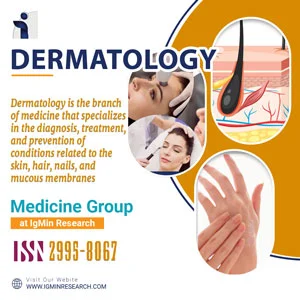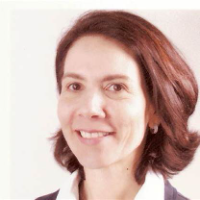Open Access Policy refers to a set of principles and guidelines aimed at providing unrestricted access to scholarly research and literature. It promotes the free availability and unrestricted use of research outputs, enabling researchers, students, and the general public to access, read, download, and distribute scholarly articles without financial or legal barriers. In this response, I will provide you with an overview of the history and latest resolutions related to Open Access Policy.
About
Dermatology is the medical specialty dedicated to the study, diagnosis, and treatment of conditions affecting the skin, hair, and nails. Dermatologists are experts in identifying various skin disorders, ranging from common issues like acne and eczema to more complex conditions such as skin cancer. Their knowledge and skills extend to managing skin health, aesthetics, and improving patients' overall quality of life.
The study of dermatology involves understanding the anatomy, physiology, and pathology of the skin. Dermatologists utilize clinical observation, diagnostic tools, and advanced therapies to address a wide array of skin concerns. By combining medical expertise with cosmetic treatments, dermatology plays a pivotal role in enhancing both health and appearance.
Medicine Group (2)
Open Access Policy refers to a set of principles and guidelines aimed at providing unrestricted access to scholarly research and literature. It promotes the free availability and unrestricted use of research outputs, enabling researchers, students, and the general public to access, read, download, and distribute scholarly articles without financial or legal barriers. In this response, I will provide you with an overview of the history and latest resolutions related to Open Access Policy.

Why publish with us?
Global Visibility – Indexed in major databases
Fast Peer Review – Decision within 14–21 days
Open Access – Maximize readership and citation
Multidisciplinary Scope – Biology, Medicine and Engineering
Editorial Board Excellence – Global experts involved
University Library Indexing – Via OCLC
Permanent Archiving – CrossRef DOI
APC – Affordable APCs with discounts
Citation – High Citation Potential
Which articles are now trending?
Research Articles
- On how Doping with Atoms of Gadolinium and Scandium affects the Surface Structure of Silicon
- Application of Virtual Reality (VR) in Facility Management Competency-based Training (CBT) in the Era of Industrie 5.0
- Adaptation of the Physical Literacy Scale for Adults into Turkish and Examination of its Psychometric Properties
- Use of Augmented Reality as a Radiation-free Alternative in Pain Management Spinal Surgeries
- Maternal Knowledge and Practices in Caring for Children under Five with Pneumonia: A Cross-Sectional Study in Vietnam
- From Traditionalism to Algorithms: Embracing Artificial Intelligence for Effective University Teaching and Learning
Advertisement











